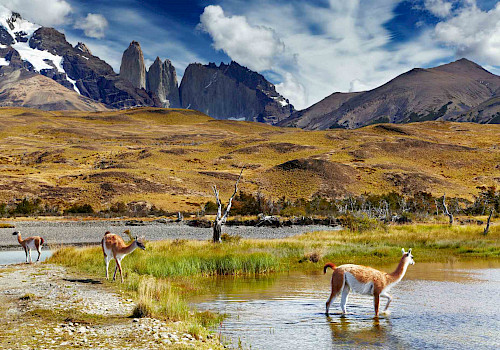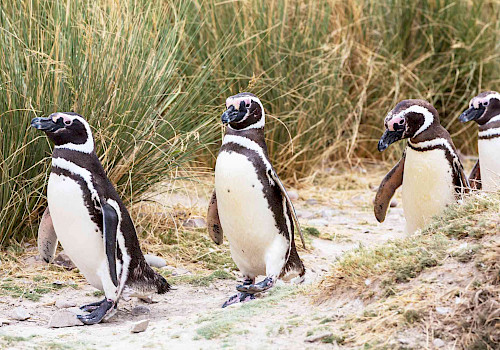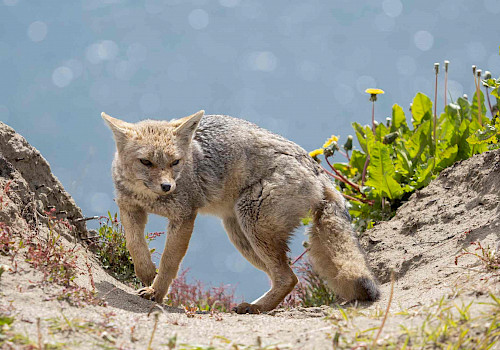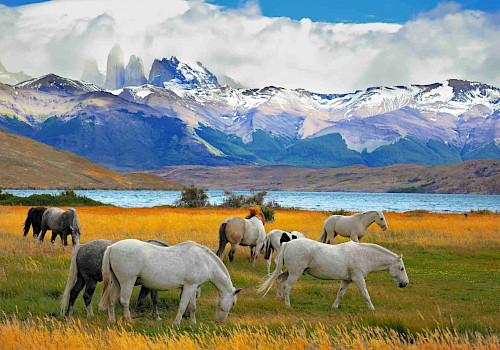

October 13, 2023
For the second part of our Wildlife in South America series, we present to you: Pantagonia! If you haven’t already, have a look here for the first part on the wildlife in the Amazon rainforest.
Patagonia is known to be a nature lover’s paradise with its verdant forests, lakes and rivers. With over 500 different species found here, it is home to the most diverse and rich wildlife in South America. This is due to the country's varied geography and changing climate which caters to a large number of wildlife. Because of this, Patagonia is one of the places where spotting the variety of different wildlife is much easier here than anywhere else in South America.
If you are planning to visit Patagonia or just interested in finding out more about this part of the world, we have compiled a list of some of the top animals to look out for while in Patagonia and some of the best places to find them.
The Top Wildlife to Spot
The Patagonian Puma is the most sought-after animal when travelling through Patagonia. Once an almost extinct animal, it has made a comeback in recent years due to the incredible safeguarding work done by the country. In this respect, it remains one of the more elusive of the animals in Patagonia though sightings of them are still very possible. The Patagonian Puma is the largest carnivore in the country and feeds off the large number of guanacos found in Torres del Paine National Park which is where it has made its home.
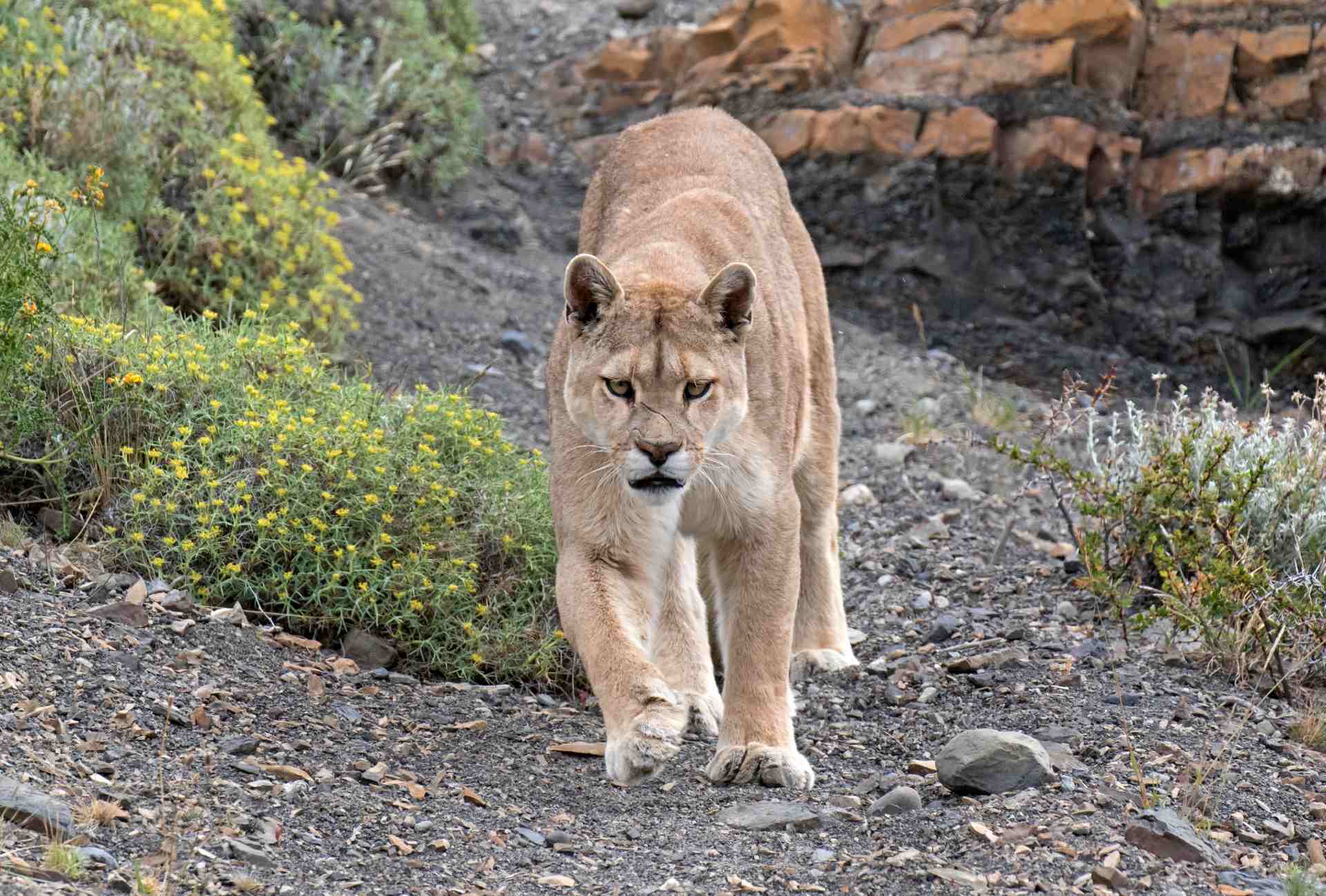
The Grey Fox and the Fuegian Fox are small canines that can be found throughout Chile and are easily found as they are curious animals who come out to hunt for their lunch or dinner. Their diet is mainly composed of small rodents, eggs and berries. The Fuegian Fox is the larger one of the two and is known for its beautiful red and brown fur. Though both of these canines are endemic to Chile they particularly like to roam around the plains of Tierra del Fuego.
The Huemul deer is Chile’s National symbol and is found on their coat of arms. Unfortunately there are only a few hundred of these South Andean deer left due to having been hunted in the past. This makes them the most protected of all the animals found here and a rare sight to see, rarer still than the elusive puma. The Huemel deer are slightly smaller than your average deer and have very distinctive large ears.
Guanacos are distant and southerly cousins of the infamous llamas and alpacas. They are found in abundance in Patagonia with more than 2000 of these fluffy camelids living in Torres del Paine National Park alone. Travellers won’t find it difficult to spot these mammals during their trip. Guanacos like to travel in packs and travellers can at times see up to 400 of them at one time.
The Andean Condor is known for having the largest wingspan of any bird on earth, averaging over 3m. This vulture is the national bird of several South American countries such Bolivia, Chile and Ecuador. The male condors are physically different to females and it is easy for travellers to be able to tell them apart. Males have a white ruff around the base of their necks as well as yellow eyes whereas females don’t have a ruff and have red eyes. It is an impressive sight to see, to see them soaring in the skies so majestic they are.
The Best Parks to Visit
Torres del Paine
Part of the UNESCO’s Biosphere Reserve, The Torres del Paine National Park is truly a wondrous sight to behold with its impressive granite pillars that tower above the park making it one of the most popular place to visit in Patagonia. It is renowned for having the largest number of wildlife in their park due in part to its very large surface area. The Patagonian armadillo is a particular inhabitant of the park with this variety having a soft layer of fur on top of its protective armour. They enjoy digging and burrowing into the soft earth which makes Torres del Paine the perfect location for it. The hog-nosed skunk is another animal that lives in the park, a fact that surprises many as skunks are not necessarily native to the area. They come out mostly at night but travellers will occasionally find them digging for food during the day. Be sure to keep your distance though unless you want to get sprayed!
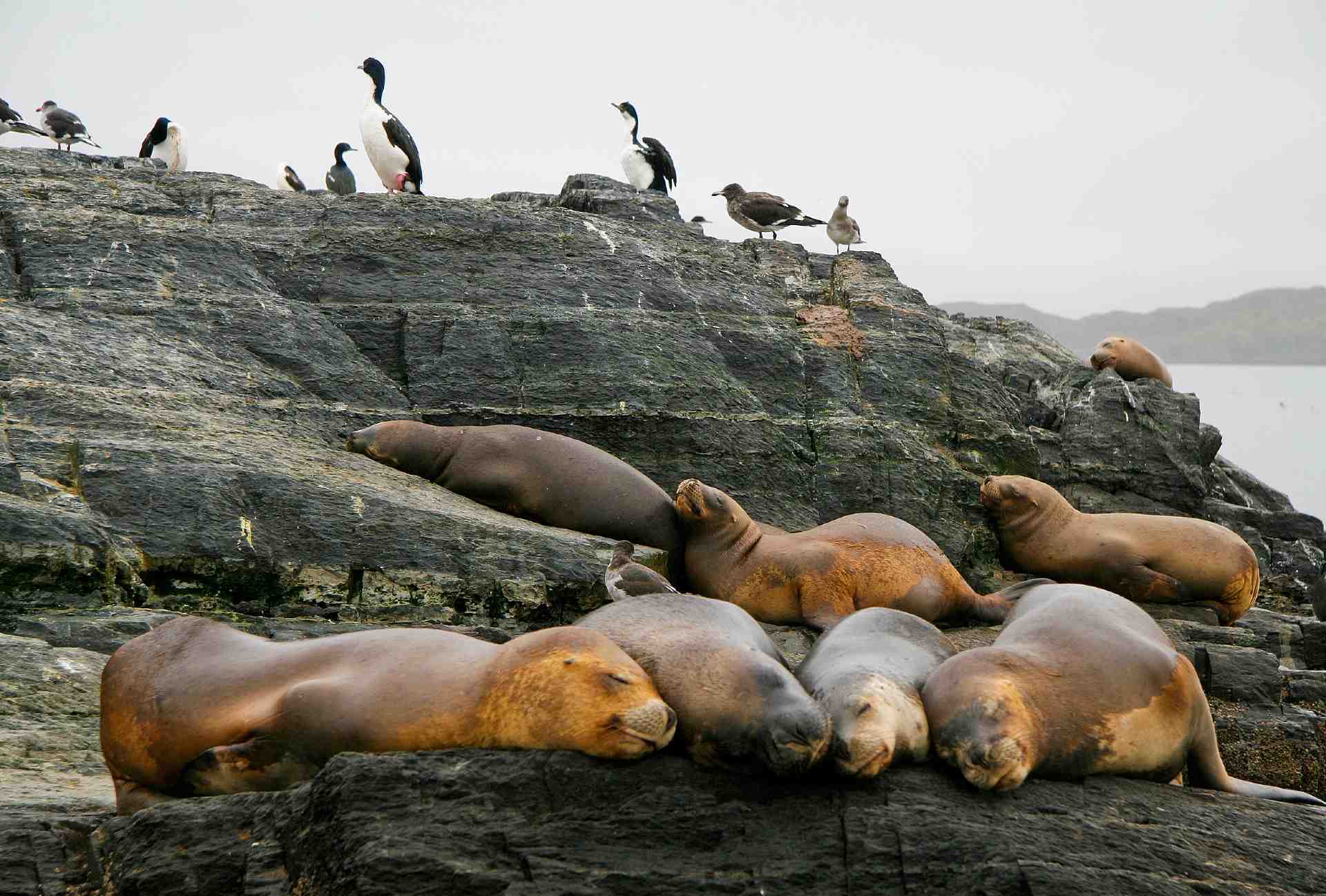
Valdes Peninsula
Valdes Peninsula is the most significant place in Patagonia in terms of marine conservation which makes it the best place to go to to see marine wildlife. Many of these marine mammals have their breeding grounds here like the Southern elephant seals and the Southern sea lions. The peninsula is made of 40km of shoreline and on top of being a breeding ground for marine mammals it is also a nesting ground for bird colonies and the Magellanic Penguins. It is said that there are 181 recorded bird species here. The Southern Right Whale is one of the most popular and attractive of the animals in the region. These mammals were once close to extinction due to excessive whaling but thanks to great conservation efforts their numbers are steadily increasing. The best time to see them is from June to December when the whale migration takes place.
Tierra del Fuego
Tierra del Fuego is the southernmost part of the Argentina and gets its name from Ferdinand Magellan who saw fires set upon the shore when sailing around the continent. You cannot get further south than here and it is the starting point for trips to Antarctica. You can catch some more of the unique sea life of Patagonia here such as penguins, sea elephants and sea lions. Martillo Island which is a short boat ride away is home to a colony of penguins. Travellers can head over for a day trip and experience a walk alongside them. The penguins also share the island with a variety of birds such as skúas, petrels, cormorants and vultures.
Perito Moreno National Park
The Perito Moreno National Park is named after the founder of Argentina’s Park system. It is Patagonia’s wildest park and is comprised of 115,000 hectares of steppe, lakes and fjords. The area is home to the Andean deer and the chinchillón anaranjando a species of viscacha; a small rodent that resembles rabbits. A large amount of birds can be found soaring through the skies above this park. Common ones are the black-crested buzzard eagle, Patagonian woodpeckers and crested caraca. The lakes here are a favoured spots for the surrounding wildfowl such as flamingoes, swans, wild geese and ducks.
Los Alerces National Park
Los Alerces National Park is considered as one of the most beautiful parks in Patagonia. It was created in 1937 with the goal to protect the forests and animal species that are found here. The park gets its name from the Alerce trees, a type of tree that is native to the region and is similar to the North American sequoias. These trees are found in abundance here and though very large, they grow only a millimetre per year. The Huemel deer and Pudú are both native to the region and can be found here though sometimes scarce as they have suffered from excessive hunting in the past. There are 126 different species of birds listed in the park and it’s one of the highest numbers across Patagonia. There are also many lakes here - Cisne Lake and the Menendez Lake to name a few - each of them have a large number of fish in their waters such as trout, salmon, catfish and puyén.
Patagonia is without a doubt the most diverse both in terms of wildlife but also in terms of their parks and landscapes. Here at Uncover South America we can create custom itineraries to ensure you get the most out of your trip to Patagonia and that visitors get to see all of these wonderful creatures.

